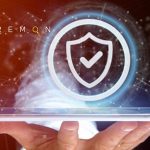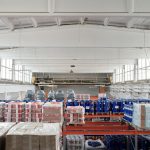Supply Chain (SCM/SCE)
Supply Chain Management (SCM) Software, Supply Chain Optimisation, Supply Chain Execution, hardware transport, supply-chain, distribution software, freight software and load planning in manufacturing and supply chain applications.3 Ways a Control Tower Can Help You Recover Revenues & Resilience

Supply chains have never been more exposed to uncertainty and disruption. Businesses are turning to Control Towers to secure the visibility they need to stay better informed, connected, and resilient as revenues drop and many supply chain partnerships become less viable.
However, while Control Towers certainly offer greater efficiency and agility, many practitioners and buyers don’t realize just how much they vary in their breadth and depth.
Here we’ll explore three unexpected ways that Control Towers can offer incredible flexibility and financial returns.
1. Blending Planning & Execution to Boost Order Optimization
The supply chain is a complex ecosystem of diverse parties managing multiple order types, shipments, and inventory in multiple locations against various cost factors. Planning an order requires insight into real-time processes and flows to facilitate the smartest, most cost-effective use of all available resources. The same is true for execution – especially when operations don’t go as planned. Timely access to all options and opportunities minimizes latency, impact, and loss.
Most enterprise systems, such as ERP, WMS and TMS, typically focus on planning or execution, but rarely both. The ideal Control Tower, then, is one that bridges the gap by providing a holistic view of all inventory, in-transit stock, replenishment plans, and all order, shipment, and flow types (inbound, outbound, aftermarket).
Also, data is only as good as what you can do with it. A robust supply chain Control Tower will be configurable and able to apply smart business rules to the information it gathers. To quickly adapt to changes and disruptions, choose a Control Tower that lets you easily and continuously configure operational parameters and constraints. The Control Tower should then leverage that data to plan the most optimal flow paths to fulfill each order, by determining the best partner options, use of resources, and routes.
To streamline the execution of these plans, a digital Control Tower can automate these decisions and then offer real-time status updates to monitor progress at every stage of fulfillment. When exceptions arise, the supply chain Control Tower should offer new and updated intelligence on the best ways to respond, for instance, by reevaluating paths, flows, costs, and available parties.
In-app exceptions management is another highly overlooked, but tremendous way to save on costs. Splitting or consolidating orders as needed with a click of a button can save exponentially on unnecessary expedites among other things.
2. Converging Order & Logistics Management for Greater Flexibility
Control Towers that only cover logistics and transportation limit decision-making. These solutions calculate the cheapest and fastest way to ship an item from a determined location (i.e. a distribution center) to its destination (i.e. to a store). Unfortunately, these are just a few parameters in a far more complex reality.
For comprehensive visibility, a Control Tower must capture a wide range of data (structured and unstructured) from diverse sources (enterprise and network systems, telematics devices, IoT, social media, etc.).
A Control Tower that has real-time insight into all ongoing orders, flows, business network options, and criteria and constraints will factor in the greater supply chain complexity and let businesses know whether it’s more ideal to ship from a different location (let’s say one that has better stock) or even split the order and have it ship from multiple locations.
Logistics and transportation-focused systems tend to limit themselves in only a few modes or order and flow types. An order-centric platform doesn’t impose such formal restrictions, and so can accommodate more complexity and versatility through unlimited mode and partnering possibilities.
3. Uncovering Previously Hidden Costs
Most companies manage supply chain segments and logistics spend separately, often using a variety of static enterprise systems and/or spreadsheets, which are disjointed by nature. When this happens, logistics, procurement, and finance teams end up operating blindly of one another and incur uncontrollable and unmanageable logistics costs.
The right Control Tower can provide extraordinary insight into how companies view and control spend. If you want to get a true cost-to-serve picture, you’ll need a holistic supply chain Control Tower that documents an order’s journey from start to finish in great detail, including every leg, mode, service order, and all tariffs, contracts, and prices encountered.
Through the intelligent blending of order planning and execution, a holistic Control Tower will automatically capture the full breadth and depth of all types of costs – handling, customs, duties, storage, transport, and so on – to arrive at a total landed cost.
Modeling landed costs and tracking these costs on a continuous basis can provide financial returns that were unimaginable otherwise. And, as an added benefit of capturing all cost types, your Control Tower will be able to standardize all invoice processes, like invoice matching. Such digitized and automated process standardization eliminates errors and discrepancies and provides holistic cost visibility and control to your logistics, procurement, and finance teams.
If you manage a complex, global supply chain with high dependency, a large, growing network, and increasing customer service demand, you need a Control Tower that is built to manage supply chain orchestration. A unified platform that converges order and logistics management and spans the end-to-end multi-enterprise business network – beyond transportation – will offer you the greatest levels of flexibility and agility. Because to really boost profits and lower costs, you need technology that will help you partner intelligently and dynamically and in a way that benefits all partnerships and activities simultaneously.









